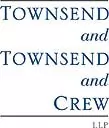In a potentially far-reaching decision on patent validity, the Supreme Court held in KSR Int’l Co. v. Teleflex Inc. that the determination of whether the subject matter of a patent claim is obvious is an "expansive and flexible" legal inquiry, and that the Federal Circuit's test requiring a specific "teaching, motivation, or suggestion" to combine prior art references (the so-called "TSM" test) must not be applied rigidly. The Court’s decision in KSR will likely make it much easier to invalidate patents that provide insignificant improvements over the prior art.
In KSR, the single patent claim at issue was directed to a mechanically adjustable automobile pedal to which an electronic sensor was attached for electronically controlling engine throttling. Technology trends have dictated that virtually all modern pedals are electronically controlled, and adjustable pedals have been well-known for several decades. The district court concluded that one prior art reference -- the Asano patent -- taught all the limitations of the asserted claim except for locating the electronic sensor on the pedal support bracket. However, several other prior art references before the district court taught locating an electronic sensor on a pedal support bracket. Although none of the prior art references explicitly suggested mounting the sensor on a fixed pivot point on the pedal support bracket, as recited in the claim, the district court determined on summary judgment that the claim was obvious, noting that there was "little difference" between the teachings of the prior art and the teachings of the asserted patent.
On appeal, the Federal Circuit reversed the grant of summary judgment holding that the district court had not articulated a "specific understanding or principle within the knowledge of a skilled artisan that would have motivated one with no knowledge of the invention" to attach an electronic sensor to the fixed pivot point on the support bracket of the Asano assembly. The Federal Circuit noted that under its precedent, a skilled artisan would not be deemed to have been motivated to combine prior art references to arrive at the invention unless the prior art sought to solve the same problems faced by the inventor.
In a unanimous decision, the Supreme Court reversed the Federal Circuit, restating the importance of a "flexible" obviousness inquiry as articulated in Graham v. John Deere & Co. The Supreme Court further held that the Federal Circuit had erred in three ways: first, by holding that courts and patent examiners should look only to the problem the patentee was trying to solve in evaluating a motivation to combine elements of prior art; second, by assuming that the skilled artisan will be led only to those elements of prior art designed to solve the same problem faced by the inventor; and third, by concluding that a patent claim cannot be shown to be obvious merely by showing that a combination of prior art elements was "obvious to try."
Does the KSR decision really work a change in the law? In decisions issued since certiorari was granted in KSR, the Federal Circuit has taken great pains to make clear that its TSM test is not applied in a rigid, mechanical fashion, but rather is expansive, taking into account the skill of ordinary artisans in the field. The Supreme Court appeared to approve of these more recent decisions and apparently will allow the Federal Circuit to continue applying the TSM test, albeit in a less formalistic manner. Nevertheless, the Court’s decision in KSR is likely to embolden the PTO and courts around the country to invalidate patents that provide little, if any, contribution over the prior art.
This article is for informational purposes only and is not intended to be, nor should it be considered as, legal advice or opinion.
© 2007 Townsend and Townsend and Crew LLP. All Rights Reserved.

